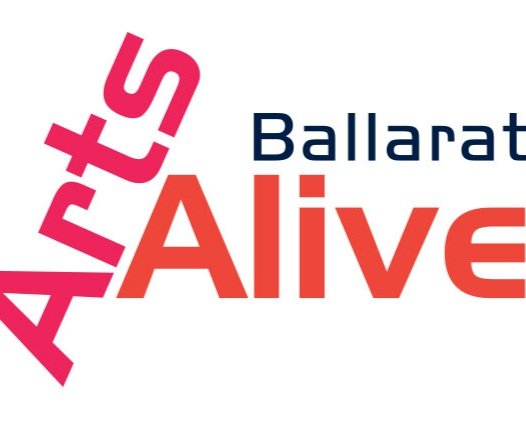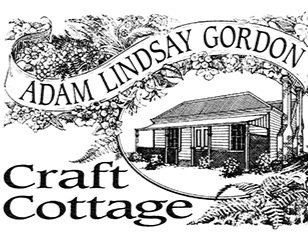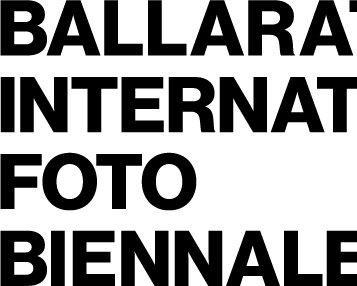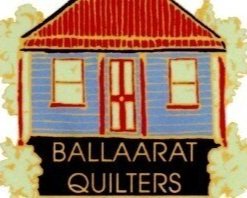Chris Dench - composer
Born in London, and brought up on England’s south coast, Chris Dench left Britain permanently in 1987, and is now an Australian citizen, resident in Ballarat, VIC. Dench has been a composer since 1961, and has written upwards of seventy works. His music has been extensively performed, broadcast, and recorded, in Australia, North America, Europe and Asia—even in a tent in the Gobi desert.
Chris’s works are available on CD and also online; scores and other material are to be found on his website. Reprinted from Musica Kaleidoskopea, the original article can be found here.
THE QUESTIONS
What is your earliest musical memory that, in looking back, has proved to be significant regarding your career as a composer?
I find that my experience didn’t really work in quite that epiphanic way. In memory it feels more like a slow accretion of meaning with regular revelatory additions by way of LPs, chance meetings, radio broadcasts. I started writing music long before the beginning of autobiographic memory, and one of my first memories is sitting in hotel rooms in Norway babysitting my younger brothers while our parents ate, and writing complicated fugues to while away the time—I would have been about ten. But at that stage, my composing would have lacked any sense of creation as the expanding on an existing body of knowledge. That it later acquired as a result of stumbling on various recordings—amazingly, in the racks of the local supermarket—from John Coltrane’s Kulu se Mama and the first Quicksilver Messenger Service album, via Cathy Berberian and the Grateful Dead (live, of course), to Bruckner’s Fifth Symphony and Hindemith’s Herodiade. At much the same time I first heard BBC broadcasts of Stockhausen’s Gruppen, Szymanowski’s Stabat Mater, and heard my father’s LPs of Alkan, 16th century Spanish organ music, and pre-eminently, Schubert. Nowadays I identify 1967 as the year of discovery, where music changed from a childish hobby into an urgent imperative as a result of absorbing these disparate elements.
My father was an eccentric collector of music. His taste was driven partly by testcard music, back in those days when the BBC TV spent a lot of time off-air and used interesting and often obscure sound recordings to fill the empty space. Consequently, the first Rachmaninov Concerto I got to know thoroughly was the First (still my favourite), the one where the melodies are not depressingly narrowband. We lived in Dover, in Kent, which was not a particularly small town but might as well have been for the amount of culture that found its way there—being a port, the population was about 50% transient. The nearest big town was, mirabile dictu, Canterbury, and it was there that I found LPs of Vaughan Williams and Britten, Dunstable and Power, and got a sense of what being culturally English was really about, for better or worse. (Twenty five years later I had become heartily sick of being English, and being perpetually cold, and was delighted to escape the place and embrace being an Australian).
In 1969 a number of pivotal things happened. I was declared third prizewinner in the Southern Television Young Composers Competition …which they had taken two years to adjudicate; they had received an order of magnitude more entries than they had expected, 750 I later gathered. The work of mine that won was already three years old, and Southern TV declined to play it on-air, representing the winners only by the anodyne Bartòk- and Chopin-clone works placed first and second; my piece was, presumably, deemed too controversial to scare viewers with (it was polytonal!). From this I learned two things: the kind of music I was writing was not going to be smiled upon by the musical establishment (and nothing has changed there in the ensuing fifty years), and that it was a dumb idea to let all the local publicans know that you were underage.
In the same year so far as I recall, I was told by the composer Alan Ridout that it was unclear whether I had any talent (my parents probably wondered if my continual scribblings of music indicated that I was deranged). He felt that the atonal ostinato basis of my Piano Sonata was indicative of lack of invention and/or aesthetic judgement… Considering the anaemic quality of Ridout’s own music I regard this in retrospect as particularly rich. A compensation for this trivialisation of my efforts was hearing a BBC broadcast of Claude Helffer playing the Barraqué Sonate, revelatory in every sense. For years after that my music sounded like Barraqué, and to this day I feel a deep connection with his music. The sonic influence has not entirely vanished even now.
Also in 1969, I went to a performance by a school in Folkestone of an opera, Genesis, by one Edward Cowie, who went on to be a fascinatingly independent-minded composer. I got to speak to Cowie and subsequently visited him a few times at his home in foggy Capel-le-Ferne. It was through him that I first heard a lot of important music, the one I most strongly recall being Ives’ Three Places in New England. I have never lost my fascination for Ives’ music and although there seems to be almost no stylistic connection between my works and his, I am aware of a deep similarity between our approaches.
The final, and in some ways most impressive, experience from that year was attending a Prom Concert in the Albert Hall in London. This was a historically notable concert, it turned out, as the audience were required to complete voting slips in the interval to decide which of the three pieces in the first half would be repeated in the second—an experiment that has not, so far as I know, ever been repeated. The three works we were required to choose from were Thea Musgrave’s Concerto for Orchestra, Don Banks Violin Concerto, and Tavener’s In Alium, with its pre-Adès stratospheric soprano line. Forgive me, I was 16: I voted for the technicolour-yawn Tavener, which was duly repeated, followed by a performance of Kontakte, complete with piano and percussion. Today, both the Musgrave and Banks works rank very high in my esteem; I’ve listened to the Naxos CD* of the Tavener once …and never will again.
Shortly after that I escaped the stultifying cultural impoverishment of Dover (despite its mediaeval buildings), settled in London, and began a constant round of concerts, cinema, bookshops and rock and funk and jazz gigs (I’m in the audience on the Tubes’ 1976 live album What do you want from live, for instance). I was briefly a member of the Scratch Orchestra, and have fond memories of Cardew & Co. That is another story of course.
So, no epiphanic world-rocking experience, but the gradual widening of my horizons to the point where I was ready to find my own voice, as they say.
*A footnote: I worked for many years in Thomas’ Music, the recently-defunct Classical CD shop in Bourke Street, Melbourne. One day a woman brought a copy of that Tavener CD to the counter, and I remarked that I had attended the premiere. “Yes, so did I”, she replied. “I was the soprano”.
Are there composers who have been influential or relevant regarding your own work? Has this changed over time?
I think I have filched something of use from almost every composer I’ve encountered, from de Vitry to van der Aa, so my influences, such as they are, are spread rather thin. Even the strong influences are not as obvious as might be imagined. For instance, my musical language unquestionably owes the most debt to Scriabin. His music stopped me in my tracks when I first heard it properly—that is, paid it due attention—in the form of the Op. 74 Preludes during a concert given by Roger Woodward in 1976. In the same concert was Yuji Takahashi’s Chromamorphe II, another work which I regard as central. I spent some time with Xenakis later in the decade, a composer I had been listening to for many years already, but his influence on my music was initially via the Takahashi filter. Over time I have come to appreciate highly the works of Nicolai Roslavets, and I think it’s true to say that the Scriabinism in my style is distinctly tilted towards the next generation of Russian avantegardists, Roslavets, Lourié, Mosolov, Obouhow*.
Barraqué I have already mentioned. There are several other, less overt, influences that I am very aware of, but are not necessarily discernible in my pieces. One of these is Robert Graettinger, who wrote several charts for the amazing Stan Kenton orchestra in the late 50s. I first heard his work City of Glass played by the Kenton band on a 10” LP in about 1968 or so, when the work was nearly ten years old, and I was instantly hooked. This was one of the very few works to successfully and satisfactorily import modern jazz idioms into a genuinely symphonic landscape, and to this day it sounds very fine to me. This is not to diminish other such works which I also admire, like those of Schuller, and in particular John Alden Carpenter’s lovely Skyscrapers and Krazy Kat. City of Glass remains, however, sui generis—a marvellous if underrated achievement.
Two other art works live in my bloodstream and inform everything I write. In order of impact, they are, from 1971, the Can’s album Tago Mago, arguably the single most important album in all rock music. From the moment I first put this on my turntable I was convinced that I was hearing something epoch-making. It took a few years for a context to develop in which to place the Can’s music, beyond just generic krautrock, but when you consider that John Lydon auditioned to replace Damo Suzuki after leaving the Sex Pistols in 1978, you realise just how wide their influence had spread. Lydon did not succeed in joining Can, and took his concept of how he might have made music with them into another essential band, PIL. Then, a few years later I was seduced by the exotic record cover into listening to Miles Davis’ Agharta. Up until that point I had regarded Miles as a dull if pleasant tootler. Agharta simply rammed this lazy perception up my downstroke. To this day the unique textures of this astounding music inhabit my psyche. Working in record shops, I had the great advantage of hearing these albums virtually the day they were released. It was a major element in my musical education.
(…and, just to set the record straight, I heard every Frank Zappa concert in London through the seventies, until I became weary of the silliness—the puerility and repellent gender politics vastly overweighed the mild interestingness of the music. A perfect example of this is his Jazz discharge party hats from the Man from Utopia—there was a version (which I can no longer find) of this song on Youtube synced with the score, which every composer should see …once. It’s undeniable that he was a major talent, but he managed to permanently stamp a large part of his work with a repulsiveness that will in my view, despite Dweezil’s extraordinary efforts, eventually sink it. Mind you, people still read Tom Sharpe).
*There are some indispensable recordings of large-scale works by Obuohow on Youtube that seriously deserve wider appreciation. I suspect appreciation of his music is hindered by the number of ways his name has been spelled: Obuchow, Obukhov, Obujov. Jay Gottlieb and Roger Woodward have both recorded his short piano works.
How do you approach the question of “form” especially for longer works?
This is a very technical question and one that I cannot expound on briefly. How I approach form is a different question to why I approach form the way I do, and that is more easily described. It seems to me that immediately after the end of WWII there was a sense among artists of all types that the slate had been wiped clean. Western culture had simply, albeit partially, failed, or at least had been revealed as impotent—the dominant Germanic strain in particular had surrendered its right to hegemony. Faith in historic cultural institutions was at a lowest ebb, and artists sought alternative ways of organising their thoughts. I grew up imbibing this worldview, hearing in my formative years music like that composed by Nono, Xenakis, Christou, Stockhausen, Cage—musicians who attempted to be creative while adopting a kind of cultural and musicopolitical amnesia (maybe Scriabin would count among this number). Ironically, just as I was absorbing this attitude in cut-off ‘60s Dover, musicians around the world were getting over it and moving on.
The effect it had on me, especially after diligently analysing dodecaphonic music, was to cause a loss of faith in the efficacy of musical content to be meaningful. Intervals had been defanged: their previously powerful effect had been rendered nugatory. Rhythms had been homogenised by serialism, so that they were decoupled from expressive devices such as tension-building and rhetorical emphasis. The combination of mute intervals and inarticulate rhythm was to make it difficult to imbue one’s work with any immanent meaning; this difficulty is exemplified by Schoenberg’s lovely but wrong-headed von Heute auf Morgen, a work I love greatly for all the wrong reasons. I exaggerate of course—vide Dallapiccola’s magisterial Ulisse—but I’m describing a personal not a historic vector. It seemed to me that all meaning had to be externally imposed on otherwise abstract musical objects.
The influence of Xenakis/Takahashi was to send me off to plunder Nature for useful structural mechanisms, on the basis that reflecting the natural world would provide a legitimacy for my musical procedures. Unfortunately—and I should have foreseen this—Nature’s numbers resulted in a music that was rather faceless and inexpressive. Not for nothing did Gregory Bateson (following Jung) distinguish between the Pleromatic: “the crudely physical domain governed only by forces and impacts”, and the Creatural: “the domain governed by distinctions and differences”. In Xenakis’ own music the behaviours are an end in themselves, his swirling vortices of string pizzicati or glissandi sum to a gestural meaning that mimics nature while also exemplifying it. His great, grand, statements just are. My proposed use was not of this character, and failed because I was attempting to utilise mindless musical things where I needed ideas, the Pleromatic in the domain of the Creatural.
This led me on a major quest: to find a way to invest my musical material with inherent meaning, so that its validity emerged from within, rather than being imposed from without. After much frustration and several not-quite satisfactory pieces, I heard a totally unexpected and liberating work: Tif’ereth by the late great Emmanuel Nunes—as I recall in about 1986. Later I had the pleasure of meeting Nunes but at the time I had never heard of him; I had no idea he was the outstanding Portuguese composer, arguably of all time. This work, in keeping with its kabalistic title, used a form of gematria to convert the names of its dedicatees, and several others who Nunes preferred to leave anonymous, into raw musical material by processes of mystico-numerical transformation. Thus his musical material was infused with the essence of these human ‘signifieds’ through the medium of what the CB community call their ‘handles’. Now, I don’t buy into the mystical aspects of this blatantly neo-Platonic usage, but I was very taken with the idea of an abstract set of values achieving a metameaning through its provenance.
The question then arose, what kind of textual string might be useful in this fashion? One of the great benefits of gematric conversion of written language (and it doesn’t matter which language) is that it has intrinsic symmetries that have nothing to do with nature, or number, or other symbolic systems. Written language has evolved considerable detachment of its signs from its signifieds—and the rules of spelling may be virtually arbitrary but they are nonetheless rules, with quite distinctive patterns.
The upshot of this idea was that I started to see a potential to link titles to pieces in a stronger way than simple authorial fiat. So my work ik(s)land[s] uses the gematric string
9—11—19—12—1—15—4—19 (∑: 90)
to generate its raw material. A much newer work, in Chasm City for guitar, uses the name of the author of the eponymous novel for its basis: Alastair Reynolds:
18—5—25—14—15—12—4—19 (∑: 112)
which is in this case a very good fit, because the gematric version of Reynolds’ name describes a symmetrical ‘chasm’:
18195425121415
With this kind of inscape (to borrow Gerard Manley Hopkins’ term) it becomes unnecessary to crudely impose some external message on the music. The piece exemplifies itself.
Beyond the obvious benefit of providing one’s piece with a built-in sense of meaning, this use of numerology opens the way to a further element of structural rigour: selfsimilarity. In many of my pieces, the difference between global architecture and the minutiae of local rhythm is only one of scale. Admittedly, the grain of the structural elements is a bit coarser the closer you get to temporal ground zero, but the principle is in essence fractal. This is probably my single central tenet about form: it’s all rhythm.
The big step is converting the simple, abstracted set of values that gematria provides you with into something that is musically tractable. Discoursing on that would exceed the available space. However, I would make an important point here. Form, as a creative tool, described above, and form as a compositional outcome, are very different things. The kinds of mechanisms and materièl that I develop to write a piece and out of which my personal vision of its form emerge, are quite distinct from the formal character of the musical result. I could show in great detail the various superimpositions of pattern that I used to generate the musical text of a piece, but that would cast very little light on the work as a phenomenon. One of the examiners for my PhD complained that I had not ‘analysed’ the pieces in my portfolio. I laughed out loud when I read this the first time. For this examiner a description of the compositional process was interchangeable with an analysis of a work. This is quite obviously nonsense (and besides, whose business is it but my own how a work of mine came to be?). It is no more true than the architectural drawings being a satisfactory account of a building. Pleasingly, listeners have been known to discern some aspects of the form of my pieces that I had not previously been aware of: I like the idea that the works I have written are greater than the sum of my parts*. If you want to experience the form of my pieces, listen to them.
* I suddenly realised in the middle of a recent performance of my piano piece flex for AR that it could be parsed as being in Sonata form, if one felt so inclined. That thought had not once occurred to me in the process of composition.
Would you mind speaking a little concerning your working process, i.e., do you have a regular schedule for writing; do you use a computer for composing (either for creating pre-composition materials or notation), if so, do you find that it inhibits your process? What other technology, if any, do you use?
For much of my life I had a day job indirectly-, or un-related to music, in bookshops, record shops, PRS, the Australian Tax Office, and the like. These did not allow a lot of time or headspace for writing and it astonishes me that I managed to get anything written over the years, let alone seventy or so pieces. It is certainly true that, as a result, many of my older pieces are not, in the formal sense, finished; many of them still require work. It was difficult to be creative under those conditions; for example, I find it normally takes about two hours before what is emerging under my hands feels right, and being perpetually limited to working in blocks of not much more than two hours has meant that much of what I produced was unhoned, the music underachieving. This is only apparent to me, of course; only I know the extent to which my completed works fall short of my original ambitions.
Today, however, I am what is laughably referred to as ‘retired’; chronotype: Night Owl. Consequently I am working harder and producing more, and better, than I ever did before. I find I am at my most awake between 10pm and about 4am, and these are the hours when I work. This routine is less extreme than it has sometimes had to be: my 2002 chamber work light-strung sigils was written between midnight and 8 am (unavoidably—I had an evening job) over three vitamin-D-deficient months. My life these days revolves primarily around two projects: realising the many ideas I have stockpiled over the years; and revising those older unsatisfactory pieces into final shape—I am about to embark on a thorough rewrite of my 1985 string quartet strangeness as a first step.
A limiting factor is that I can really only work on one piece at a time; I get conceptual whiplash from jumping from one piece to another too rapidly. I can, if I have to, work on preparatory aspects of one work while writing the musical text of another, but I must admit to finding this frustrating as I risk losing the momentum of inventive consistency on one while being impatient to realise the potential ideas being sketched for the other. Because of my history of having to work in bursts—and, frequently, to interrupt one piece in order to write another—I try to always leave myself an exhaustive paper-trail so that I can pick up where I left off without too much initial bafflement even if (as sometimes happens) years have passed. I do my initial formal workings-out on paper, but commit all this material to hard-drives for durability as soon as possible. I also have developed a format into which I can shoehorn my sketches however disparate the pieces; a template in effect. So for me the computer is mainly an archiving resource, holding sketches in a form that facilitates recall, and adjustment, and is reliably uniform in layout.
Computer notation on the other hand seems to me to result in a homogeneity of presentation that stifles idiosyncrasy. This is of course a complete volte face from forty years ago: back then, having one’s work published was an indication of accomplishment, and only the most successful and eminent composers achieved the elevated distinction of engravure, making it very desirable. Most of us had to make do with laboriously copying our work onto transparencies, and circulating the smelly dyeline scores that were made from them—scores which as we now know fade over time. Today, anyone can self-publish in as professional a manner as the mainstream publishing houses could achieve for their top names in 1975. But it is no longer possible to quickly identify an unfamiliar score by its look. My handwritten scores, retro though they may seem to the style police, are instantly identifiable and performers do not seem to find them significantly harder to read (or are very polite).
Having said that, my webmeister and sometime engraver, Andrew Bernard, utilises the Lilypond application and is able to customise many aspects of the appearance of the music such that it begins to resemble my handwriting. His work frequently draws praise for its elegance and clarity; my Piano Sonata currently exists in what we jokingly call the Basic Minimum version, a mix of my best handwriting and Andrew’s sublime engraving of the messier sections. One day Andrew will finish the remainder of the work, hopefully. But in the main, I shall continue to inflict my old-fashioned, homespun, characteristic scores on the world.
There is another consideration: I have, for many years, worked out the rhythmic life of my pieces in seconds rather than metronomic tempi, and only at the end of generating the musical text do I resolve the durations into temporal quanta—quarternotes, tuplets and so on. I reflect this in the presentation of my work by retaining the proportional notation in addition to modern mensural notational icons*: the music is presented at 3 centimetres = 1 second regardless of metronomic tempo in the majority of my scores. None of the extant notation programs seem able to provide both these formats together. As Andrew frequently observes: the man with the 1B pencil can do things in moments that take him days to achieve in Lilypond. So for me computer notation is not merely inhibiting, but also impoverishing and inadequate. My main technological aids are: a large drawingboard, an endless supply of those 1B pencils, a gridded transparent ruler, a giant calculator, and many plastic erasers and ships curves, abetted by an A3 scanner, a 27” monitor, and a laser printer. Oh, and a superb coffee-maker provided by my wife.
* I have often been asked why I do not simply leave my pieces in proportional notation, why I take the extra step of mensuralising the information. It has been said that whatever one writes, performances tend to only supply 90% of the detail (I used to quote 75%, but that was a generation ago, when performers did not have as much familiarity with the new music—today things are much better); in order to bridge this gap between intent and outcome, I provide these two quite distinct modes of coding. The two notational modes provide complementary information: the proportional notation tells the player how relatively fast everything goes, but uninformatively: it is primarily articulative. The mensural notation provides explication of why the music is configured the way it is: it informs interpretation. The combination is intended to make the musical text as easy as possible to decode.
Please describe a recent work and provide a link to an audio clip.
An obsessive preoccupation of mine is the issue of the formal closure of works. Some works have an architecture that is incomplete or fragmented in some fashion, so that the piece that exists is not an exhaustive statement of its ideas, it is formally open, while others can be regarded as full, as saturated: closed. I’m very interested in these two extremes. I once rather idealistically wrote that I wanted my pieces to be preceded and followed by “an infinity of silence”. This was a utopian fantasy of course, wanting one’s work to be neither tainted by residual memory of, nor mnemonically usurped by, other musics. It has nonetheless always been my dream to create a work that is unlikely to be bookended by other pieces: a work of sufficient scale that it would be at least a half-concert in itself. (Other composers have adopted what Richard Toop called cyclomania for much the same reason). Not unconnectedly, the architecture that has concerned me more than any other over the last thirty years is that of the Cosmic Standard Model: the Big Bang, and its aftermath. I have frequently written works that mimic this history—énoncé, symphony 3: afterimages, Agnî, among others—and each structure has adopted a slightly different take on the problem of the Cosmic Close, the “end times”, either dissipating into silence, or converging on a single melodic line, or atrophying into stasis. This notional architecture is by definition complete, and closed; to surround it with other material is to completely defeat its point. Unfortunately, I have never commanded sufficient authority to be able to convince concert organisers of the merits of permitting me to write such a work.
Until now. When Peter de Jager and I first mooted my Piano Sonata, which was intended to accompany Alkan’s Symphonie, the Szymanowski Third Sonata, and the Barraqué Sonate, we agreed that it should be substantial—I think we discussed thirty minutes. As I began to write, however, I found that my ideas did not fit comfortably into this frame and the sections of the work were taking on a truly massive scale. I had always intended the Sonata to be a single-movement arch, broken up into a number of smaller structures; although the work still retains this unbroken-arch quality, the sections have all acquired the scale of individual movements, with their own characters and teleologies. By the time Peter premièred a provisional version of the work in 2015, it had already grown to about 45 minutes, and when he essayed the complete architecture in 2016 it had crept out to fully 95 minutes—afterwards, I added two minutes of material and the definitive première in July 2017 ran to 100.
I adopted an idea for the end of the Sonata that I had encountered in two quite different contexts, the Ω Point principle. This is a complex idea that manifests in a range of disciplines, but the ones I had in mind were primarily cosmological: all the worldlines of the Universe converging on a single point of density matching that of the Big Bang (sometimes known as the Big Crunch), where all of cosmic history would be encoded eternally in a single suspended instant …including all the sentiences that had ever existed (or even could exist). These neo-Platonic, eschatological ideas were variously expounded in Teilhard de Chardin’s the Phenomenon of Man and Frank Tipler’s the Physics of Immortality. I do not for a moment regard the two notions (they are not identical) as plausible; what they offer is a very interesting structural potentiality. The structural arch of my Sonata therefore concludes with an repetitive spasm that would seem to have exhausted musical space—the singularity—but is followed by another whole movement, a kind of time-adrift ghost-realm, where material from earlier in the piece is resurrected, in a form paradoxically both heightened and insubstantial.
…Of course, I’m fully aware that even twenty years ago physicists were coming to the realisation that the Big Crunch was unlikely, that the cosmic density was simply too low to gravitationally re-attract. That the scenario is in reality obsolete does not devalue it as an architecture.
The piece has been likened to the Liszt Sonata, and of course it was always intended to be paired with the Barraqué; I also had the Reubke in mind, and Finnissy’s glorious English Country Tunes, and a plethora of other oblique influences. But the work to which I think it is most indebted, and most directly coloured the writing, is the set of twelve Transcendental Etudes of Lyapunov, music I have loved for at least forty years—and which Peter de Jager happens to play. Anyone who knows the Lyapunov will, I think, notice the resemblance. Lévy flights is the 21st century Térek…
Very recently I became one of Scorefollower’s Featured Composers, and the Piano Sonata is now available in score-synced form on Youtube; the performance is the live recording of the première of the definitive at the Iwaki Auditorium in Melbourne on July 30, 2017. This performance was hosted by the Australian Broadcasting Corporation’s Stephen Adams, and was preceded by a conversation between Stephen, Peter de Jager and myself, which can be heard here. There are nine movements:
WhiteoutPrelude50”Ithree windowsSonata-rondo9’50” …interrupted byIIheat sinkIntermezzo I3’20”’IIIphotino birdsScherzo I & trio6’’IVgallery of spacesPassacaglia23’VLévy flightsScherzo II7’VIEM fugue [A—B—C]Fantasia22′VIIk = +1Intermezzo II5’30”VIIIinfallscapeScherzo III4’15”IXTombeau/Ω PointElegy-finale17’30”
I wrote an annotated chronology of the unfolding architecture for the audiences at these early performances, reasoning that in a work of this scale, it would be very easy to become lost in space:
Anecdotes Impersonating a Sonata
The Piano Sonata opens with a Big Bang… except that of course, with no medium through which to propagate, the Big Bang would have been entirely silent. My piece adopts an alternative imagining, in that it takes as its starting-point, as Prelude, the moment in Greg Bear’s novel Blood Music[1] when all of reality has been reduced to a blizzard of quantum fluff—an ontological whiteout, which we hear as a gusting snowfall of notes. The only possible outcome of such a storm is a landscape of deep cold, which conforms, in my cosmic structural metaphor to the informationless radiation era—the movement is called three windows (I), and is analogous to a sonata-rondo. After three phases of icy stasis, through which a melody weakly threads, a sudden explosive breaking of symmetry heralds an extended Bachian three-part invention. The image here comes from Philip K Dick[2] who quotes the parable (from Bede) of the bird which flies from the winter cold into the all-too-brief warmth and richness of a banqueting hall but then flies out through the opposite window, returning to winter again (in my sonata-rondo, three times). This is of course a metaphor for the human condition, but it also conceptually maps onto the cosmic ‘dark ages’ and the gradual emergence of the first stars in the early cosmos as we see it at the extreme limits of our telescopes.
Stephen Baxter provides the concept for the next, brief, movement, which peremptorily kicks aside the brooding three windows. He imagines pragmatic aliens that have developed a completely energy-neutral form—spherical Silver Ghosts[3]—who refer to the space between the stars as the heat sink (II), referring to its frigid, warmth-absorbing 2.7°K. A series of semiotically isolated gestures, this intermezzo I ultimately flares up briefly only to freeze again.
By now, the cosmos has become inhabited. Living in the gravity wells of the newly-accreted stars, the dark-matter photino birds (III) resemble nothing in our baryonic world. A scherzo & trio, this movement derives from Stephen Baxter again,[4] in a music that tries to hint at another mode of being entirely, by providing a stream of chimerical photino birdcalls. The movement ends with a fragment from a non-dark matter magpie, heard repetitively in my back-garden at 4am every night for weeks, year after year.
With the stars now born, and space-time well under way, the ensuing gallery of spaces[5] (IV) presents a constantly morphing passacaglia of musical environments. Unlike most passacaglias, though, this movement is structurally palindromic, with its predominantly ascending, then descending, strains. Time is slow, the unfolding of the cosmos is leisurely. There is ample opportunity to consider the formal panorama.
We have reached the centre of our edifice; solar systems are forming, and the inanimate stuff that inhabits the accretion discs surrounding the stars perform Lévy flights[6] (V) as they gravitationally jostle, in the second scherzo. There are regular and irregular orbits, impacts, and escapes: turbulence. The kinetic energy peaks and dissipates, bedding down into a low-energy equilibrium.
Out of which emerges, again, melody. The nöosphere has appeared in the appropriate form of a fantasia. Electromagnetic creatures, under centuries-long siege by machine intelligences, perform a microwave frequency song to attract assistance from any passing biont. Their song, as described by Gregory Benford,[7] is an EM fugue (VI); unlike most fugues, though, this one is palindromic. It is also heterophonic, teetering into canon as the singing EM creatures move in and out of phase with one another. This nöosphere exhibits what is probably a characteristic of all such cultures, urgent acceleration: the structure is expounded a first time (A), in eighteen minutes; then a second time (B), in three minutes; then a third time (C) in one minute.
By now, the universe itself is changing. Having stalled expansion, gravity has reasserted itself and started to contract the fabric of space- time. The cosmos is spatially closed; it has negative total energy.[8] The Friedmann equation is set at k = +1 (VII); aspects of the heat sink reappear. The collapse is progressive, this intermezzo II takes us further and further into the gravity well. The movement is a homage to Kristian Ireland.
The vortex is upon us: akin to the accretion discs of Lévy flights, the condensing musical fabric coalesces, resulting in palpable density. This third scherzo conflates Gerard Manley Hopkins’ inscape (‘the essential inner nature of a person, an object, etc’) with the astrophysical notion of infall (‘the falling of matter to a celestial body from space under the influence of the body’s gravity’). The infallscape (VIII) gradually becomes sonically supersaturated, and after an extended climactic seizure, ultimately, instantaneously, evaporates.
This is not the end, however. Frank Tipler conceives of a singularity at the end of time where all the universe’s world-lines converge and a meta-intelligence is formed, recreating all possible sentient creatures, including you and me, in an eternal suspended moment of resurrection. This Ω point[9] (IX) is also described by Teilhard de Chardin in rather more theological terms, as something like heaven. Almost all of the previous musics of the Sonata are recapitulated—in reverse order, and abbreviated—in this elegy-finale, which inexorably flows towards oblivion. It is also a tombeau, memorialising my late friend Robert Schuck.
The piece is, in a sense, signed-off. The last thirty seconds of music consist entirely of the names of my wife, Kathryn Sullivan, and myself, converted into musical material. This is in fact the basic material of the entire hundred minutes of the piece, but here at the end it is heard unadornedly.[10] Simply put, without Kate’s support this piece would not have got written …and this is equally true of any other work of mine of the last fifteen years.
At the other end of the scale there is also my one-minute piano piece AB1, from my heretical bagatelles series, all homages to friends and colleagues (I think I’m entitled to do this at this end of my life). Based on the name of my friend and engraver Andrew Bernard, AB1 is also a completely closed structure, but it unfolds in exactly sixty seconds, a mere one per cent of the Sonata. It nonetheless has the same self-similarity as the longer works.
[1] Gregory Bear Blood Music, p 255
[2] Philip K Dick, Conversion of King Edwin of Northumbria, as paraphrased in The Penultimate Truth, p 59
[3] Stephen Baxter, Vacuum Diagrams, p 4
[4] Stephen Baxter, Vacuum Diagrams, p 334
[5] John Barrow describing Luigi Bianchi’s Classification of three-dimensional spaces which admit a continuous group of motions in The Book of Universes, p161
[6] Albert-László Barabási, Bursts, p157
[7] Gregory Benford, Across the Sea of Suns, p 133-144
[8] John A. Peacock, Cosmological Physics: the Isotropic Universe 3.2: ‘…The Friedmann equation shows that a universe that is spatially closed (with k=+1) has negative total “energy”: the expansion will eventually be halted by gravity, and the universe will recollapse’.
[9] Frank Tipler (from Teilhard de Chardin), The Physics of Immortality, pp xiv, 1.
[10] …and, I suddenly realise, formally parallels the ending of the Barraqué.
With huge thanks to Musica Kaleidoskopea for the fantastic article. Read more here:















